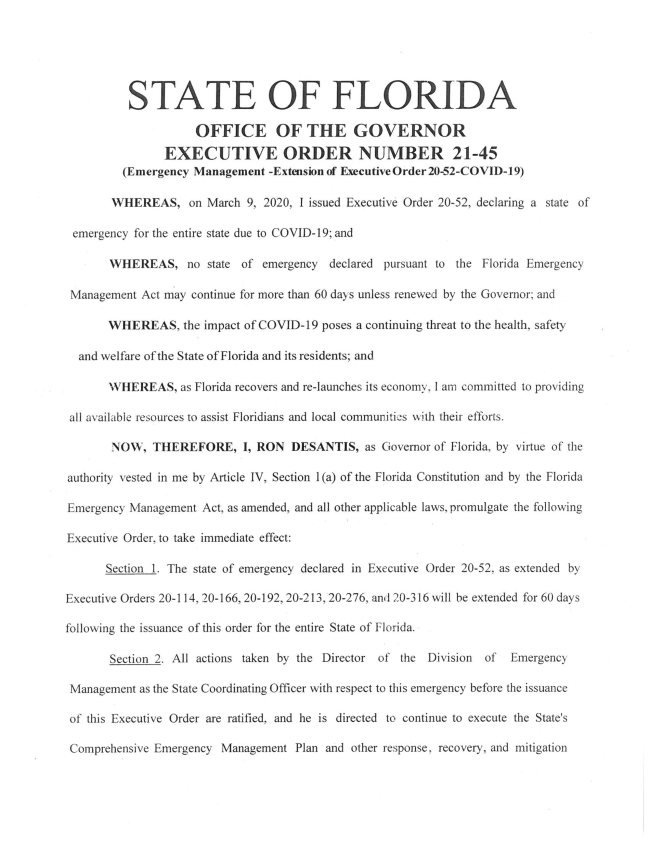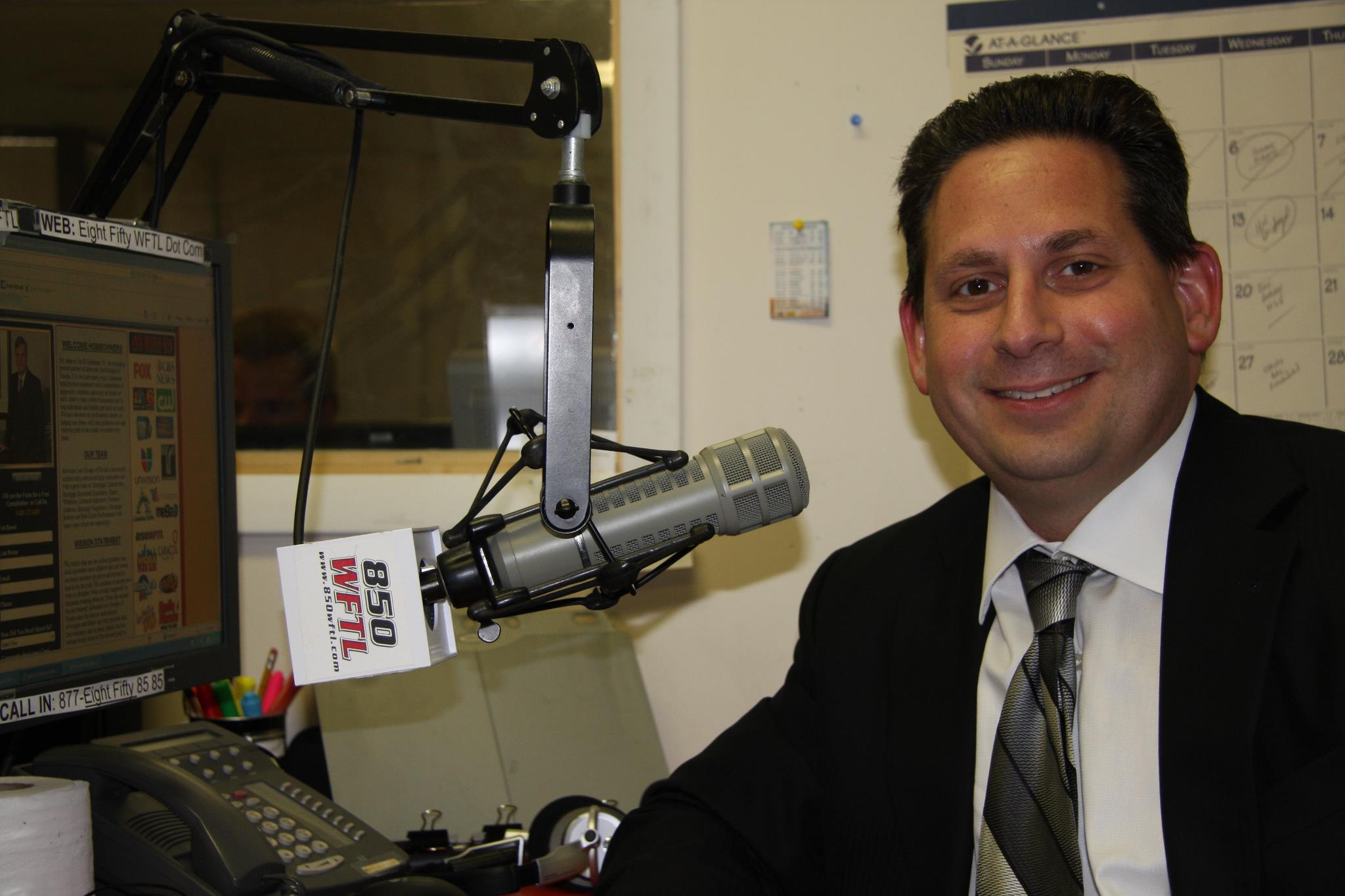Community Update: February Wrap Up – Florida Condo & HOA Law Blog
Spring is just around the corner and sprucing up is often top of mind. Whether that means improving yards, documents, or relationships, this edition of Becker’s Community Update offers practical guidance on how to move forward. Check out the hot topics below, and don’t forget to connect with us on Facebook to get real time updates on these issues and more!
While Mother Nature may be hard to harness, community associations are often tasked with doing just that to protect both residents and property. In Responsibility for Tree Branches and Roots Elizabeth Lanham-Patrie explores how the law decides who needs to tackle this chore.
In the second part of our two part series Amending Governing Documents, Jay Roberts outlines best practices for getting proposed changes approved by membership.
Maritrini Soto Garcia discusses presidential power in Does a Community Association Board President Have Executive Action Authority or Unilateral Powers?, and reminds everyone that the work of a community association is, ultimately, a group effort.
Assessments are not the most popular feature of a community association, but they are a vital resource in maintaining the amenities and ambiance to which the community has grown accustomed. In THIS CASE: Abbey Park Homeowners Association, Inc. v. Bowen, Rob Caves reviews how the Florida court decided the seminal case regarding an owner’s right to withhold payment of an assessment.
If you have new members on your board or a new manager for your community and want them to be part of our Community Update, have them subscribe here:
Amending Governing Documents Part II – How?
In Part I of this two-part series, we discussed the importance of amending governing documents. Part II discusses tips on how a board of directors can put itself in the best position to have the proposed amendments approved by the membership.
START EARLY:
Work with the association’s counsel to craft the language appropriate for the amendments well before you plan to present it to the membership formally.
Does a Community Association Board President Have Executive Action Authority or Unilateral Powers?
By: Maritrini Soto Garcia, Esq.
Community associations are not administered by a single director or officer of the board, instead, the affairs of such associations are administered by its board. The articles of incorporation and/or bylaws of an association most often specify the required minimum number of board members. In the condominium context, the Florida Condominium Act provides that in the absence of such specification, the board of administration must be composed of five members (or three members in condominiums with five or fewer units).

Abbey Park Homeowners Association, Inc. v. Bowen,
508 So.2d 554 (Fla. 4th DCA 1987)
By: Rob Caves, Esq.
Assessments paid by owners are the lifeblood of any community association and efforts to collect assessments are the most consequential and common legal proceedings any association engages in. Typically, there are few valid defenses an owner can raise to challenge the collection of properly adopted assessments. One common defense that is attempted is that the association is failing to properly maintain the common elements of a condominium or the common areas of a homeowners’ association.
The seminal case on the issue of whether owners can withhold the payment of assessments due to the association’s failure to properly maintain the common elements is Abbey Park Homeowners Association, Inc. v. Bowen, 508 So.2d 554 (Fla. 4th DCA 1987). In the case, the appellate court held that the failure to maintain the common elements is not an affirmative defense to the association’s action to foreclose on the unit for the failure to pay assessments. Accordingly, a claim by an owner that the association is improperly maintaining the condominium property would not be a valid defense to the association’s action to collect unpaid assessments or enforce the association’s assessment lien against a unit.
However, there are subsequent cases that hold that while such claims are not affirmative defenses to a foreclosure action by an association, they could constitute counterclaims and entitle the owner to a “set-off” if they were to prove that the association failed to properly maintain the condominium property and such failure resulted in damage to the unit owner or their property. See Qualcom Corp. v. Global Commerce Center Association, Inc., 59 So. 3d 347 (Fla. 4th DCA 2011) (holding that the owner was able to argue at trial that its damages from a roof leak, if proven, could be a “set-off” against the outstanding assessments). However, the facts which would entitle an owner to a set-off would be very specific and would not apply to an owner’s general allegation that the common elements, or common areas, were not being maintained, as was alleged in Abbey Park.
Accordingly, pursuant to the legal principles outlined in the Abbey Park case, the fact that an owner alleges that the association is not properly maintaining the common property, or operating the association, would not be a defense against the association’s action to collect properly levied assessments.
CALLING ALL BOARD MEMBERS AND COMMUNITY MANAGERS
As a service to the community and industry, we are pleased to offer some of our most popular classes online! While our in-person classes remain suspended until further notice due to COVID-19, we are thrilled to bring you the following classes to participate in from the comfort of your own home.
HOA/Condo Board Member Certification
- Disaster Preparedness and Recovery
- Anatomy of a Water Leak
- Understanding Our Bylaws
- Is a “No Pet” Building a Thing of the Past?
- How to Properly Run an Election
- Budgeting & Reserves
- Covering Your Assets: How to Avoid Board Member Liability
- Collection and Foreclosure Strategies for Community Associations
- Dealing with Difficult People
- Construction Projects Gone Wild
- 2021 Legal Update
VIEW ALL CLASSES














 Educational Providers: Florida Member Companies with The State of Florida Property Management Association.
Educational Providers: Florida Member Companies with The State of Florida Property Management Association.




 Glenn Sullivan entered the aquatics industry in 1993 and is currently the President of the New York State Aquatic Managers Association (NYSAMA). He is also a former member of the Board of Directors for the Northeast Aquatic Plant Management Society (NEAPMS). Over the course of 20 years, he held many roles including President, Director, Treasurer, and Editor, and continues to serve as a committee co-chair. In 2015, he was named Preferred Applicator of the Year by SePRO Corporation. He is also the recipient of multiple awards recognizing environmental stewardship, best management practices and sustainable leadership.
Glenn Sullivan entered the aquatics industry in 1993 and is currently the President of the New York State Aquatic Managers Association (NYSAMA). He is also a former member of the Board of Directors for the Northeast Aquatic Plant Management Society (NEAPMS). Over the course of 20 years, he held many roles including President, Director, Treasurer, and Editor, and continues to serve as a committee co-chair. In 2015, he was named Preferred Applicator of the Year by SePRO Corporation. He is also the recipient of multiple awards recognizing environmental stewardship, best management practices and sustainable leadership.



 Kim Niesel holds her CMCA (certified manager of community associations) designation, as administered by the Community Association Managers International Certification Board and is involved in several industry-related organizations, including the Southeastern Virginia and Central Virginia chapters of Community Associations Institute (CAI). She has served as a board member and president for both of these associations. Kim is also one of the founders of the Virginia Leadership Retreat and has been recognized several times for her volunteer involvement. She currently serves on the Board for the Virginia Leadership Retreat and is the Chairperson for the Communications Committee of the Southeastern VA CAI.
Kim Niesel holds her CMCA (certified manager of community associations) designation, as administered by the Community Association Managers International Certification Board and is involved in several industry-related organizations, including the Southeastern Virginia and Central Virginia chapters of Community Associations Institute (CAI). She has served as a board member and president for both of these associations. Kim is also one of the founders of the Virginia Leadership Retreat and has been recognized several times for her volunteer involvement. She currently serves on the Board for the Virginia Leadership Retreat and is the Chairperson for the Communications Committee of the Southeastern VA CAI.





